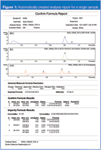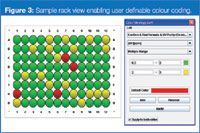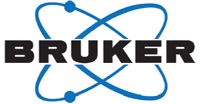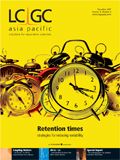Automated High-Throughput Formula Determination and Confirmation with "sub-ppm" Confidence
LCGC Asia Pacific
Combining an ultra fast LC system (e.g., Agilent 1200RRLC, Waters UPLC) with an accurate mass TOF mass spectrometer creates a powerful system for information-rich high-throughput analyses. However, for de novo formula generation and confirmation the residual mass accuracy tolerance of 3–5 ppm can still leave significant ambiguity in the proposed formula. Consequently, skilled manual inspection or further measurements deploying additional analytical techniques (NMR or MS–MS) are frequently required to arrive at a confident formula assignment.
Combining an ultra fast LC system (e.g., Agilent 1200RRLC, Waters UPLC) with an accurate mass TOF mass spectrometer creates a powerful system for information-rich high-throughput analyses. However, for de novo formula generation and confirmation the residual mass accuracy tolerance of 3–5 ppm can still leave significant ambiguity in the proposed formula. Consequently, skilled manual inspection or further measurements deploying additional analytical techniques (NMR or MS–MS) are frequently required to arrive at a confident formula assignment.
Novel technologies embodied in the micrOTOF mass spectrometer (Bruker Daltonics) allows precise measurement of both accurate mass and true isotopic pattern (TIP) over a wide dynamic range, allowing for the automated evaluation of analyses implemented in an open access system. This instrumentation enables chemists with limited LC–MS skills to rapidly confirm and identify pharmaceutical compounds with "sub-ppm" confidence in a fully automated workflow.
Open Access Software Design
Compass OpenAccess (Bruker Daltonics) has been implemented with client/server architecture. All information regarding samples, status of the jobs, data, reports and processing results are stored in an Oracle database. The database, located on a central server, serves multiple instruments and computers. Samples can be submitted easily from any PC in the intranet via a web interface. Available results can be viewed via a simple viewer in the Internet Explorer.
On the acquisition PC a very simple user interface hides the complexity of the LC–MS system and allows the user to easily queue the submitted samples for automatic acquisition and processing.
When the sample has been processed, spectra, chromatograms and formula suggestions are sent to the user as a report in pdf-format via email.
In this example a fully automated procedure using Compass OpenAccess/QC and the micrOTOF was used to both confirm the presence of an expected compound and identify detected impurities in 96 subsequent measurements.
Experimental
Sulphamethazine was spiked with two known impurities and analysed using an Agilent 1200 Rapid Resolution LC System interfaced with a micrOTOF mass spectrometer. The subsequent automated data evaluation first searched for the expected formula (calculating mass deviation and SigmaFit, a combination of accurate mass measurement and true isotopic analysis), and then suggested the most probable molecular formulae for all detected peaks. Additionally, the UV trace was used to calculate the UV purity of the expected compound according to its relative peak area.
To ensure robustness and repeatability of the system, 96 subsequent measurements were performed.
All datasets were automatically recalibrated with lithium formate using DataAnalysis software (Bruker Daltonics); possible molecular formulae were generated using accurate mass, true isotopic pattern and SigmaFit information with generic atomic search criteria (max. C100 H200 N50 O50 Cl10 Br10 S10). Result filter arguments were SigmaFit <0.1, ppm tolerance <6 ppm, max. 2 formulae suggestion, defined adducts (protonated and sodiated) for formula confirmation.
Results
Figure 1 shows an exemplary analysis report, as it is automatically sent to the user. All relevant chromatograms along with the results for the expected compound and the impurities are combined on a single page.

Figure 1
Figure 2 shows the base peak chromatograms of all 96 separations with an average peak width (FWHW) of 4 seconds.

Figure 2
Confirm Formula:
The expected formula of sulphamethazine was confirmed in all 96 samples with an average mass error of 1.5 ppm (SD = 0.8 ppm) with external calibration. Evaluation of the isotopic pattern yielded an average SigmaFit value of 0.007 (SD = 0.002). The average UV purity was determined as 63.6% (SD = 0.4%).
Figure 3 shows the sample rack view, which gives a quick overview of all combined results by means of user definable colour coding. In this example mass deviations for the expected formula are highlighted (green 0–2 ppm; yellow 2–3 ppm; red >3 ppm).

Figure 3
Impurity Formula Determination:
In 78% of the samples the formula of the impurity was the first one in the list, in 99% it was under the first two hits.
Conclusion
De novo formula generation using accurate mass, true isotopic pattern and SigmaFit information allows rapidly confirming and identifying pharmaceutical compounds with "sub-ppm" confidence. This provides a robust base for fully automated formula high-throughput determination and formula confirmation workflows as implemented in Compass OpenAccess/QC.
Sebastian Götz, Thomas Zey, Malte Vahlenkamp and Carsten Baessmann, Bruker Daltonik GmbH, Bremen, Germany.

Bruker Daltonics Inc. Region Asia Pacific
E-mail: Bruker.AsiaPacific@bdal.com
Website: www.bdal.com
Bruker Daltonik GmbH
Fahrenheitstrasse 4, 28359 Bremen, Germany
tel. +49 421 2205 0 fax +49 421 2205 104

Analysis of Greenhouse Gases by Gas Chromatography
May 15th 2024This application note demonstrates the use of SCION's 8500GC system for the analysis of key greenhouse gases—carbon dioxide, methane, and nitrous oxide—in a single atmospheric air matrix. Highlighting the system's excellent sensitivity and repeatability, this method is crucial for understanding emission sources and combating climate change.
Analysis of DEHP in Drinking Water by HPLC-DAD
May 15th 2024This application note outlines a method for detecting low levels of 1,4-Dioxane, a likely carcinogenic compound, in drinking water using SCION GC-MS technology. It details the procedure for analyzing water samples spiked with 1,4-Dioxane, achieving excellent sensitivity and low detection limits, demonstrating the method's effectiveness for environmental monitoring.
Plant Protection Product Impurity Screening by GC-FID with GC-MS Confirmation
May 15th 2024This application note from SCION Instruments delves into the meticulous screening of impurities in plant protection products using GC-FID, with GC-MS for confirmation. It emphasizes the necessity of identifying and quantifying impurities to comply with regulatory standards in industries such as pharmaceuticals, food, and agriculture. The study specifically examines eugenol, showcasing how to determine significant impurities for regulatory submission. The approach integrates GC-MS and analytical standards, ensuring precise impurity identification and quantification critical for product approval.